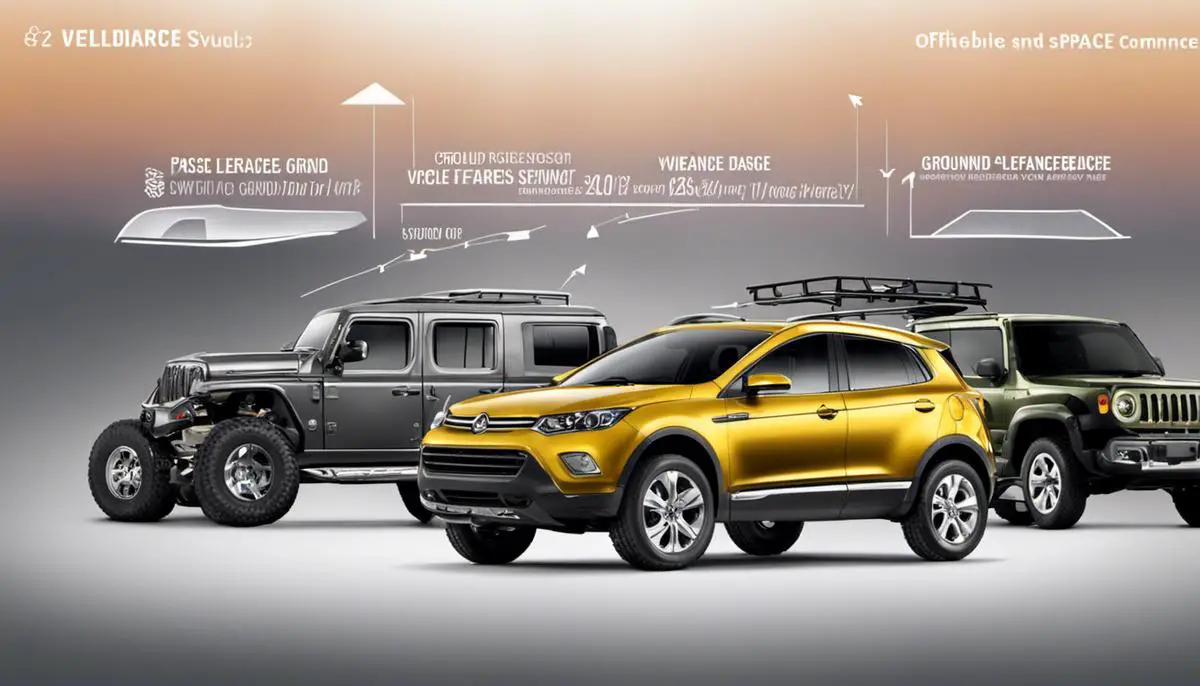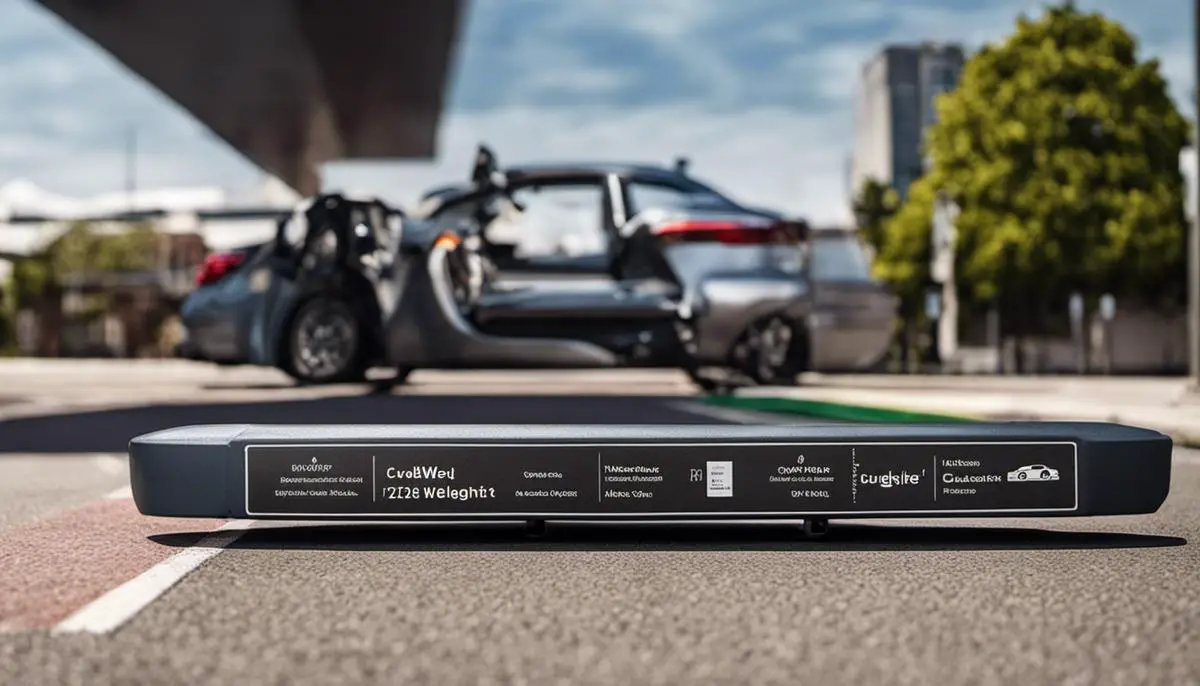As thrilling as it seems, off-road driving demands more than just a passion for adventure. When it comes to confronting rocky terrains, uneven paths, or steep inclines, few factors make as significant an impact as ground clearance. The fundamental concept of ground clearance refers to the space intervening between the underside of the vehicle and the ground. The design of the vehicle and its suspension components play a majorly influential role in the determination of this distance. The core of off-road driving pivots around the concept of ground clearance. It avoids potential damage caused by hurdles typically spotted off-road like rocks and offers an improved overall vehicle performance. This essay sets to shed more light on the subject, presenting a detailed examination of ground clearance in off-road vehicles.
Contents
Understanding Ground Clearance
Headline: Ground Clearance 101: Why It’s a Game-Changer for Off-Road Aficionados
Have you always wondered why off-road enthusiasts seemingly can’t stop raving about ground clearance? Or perhaps you’re new in the off-road community and are eager to learn why this element is so pivotal? Well, that burning curiosity ends here and now! Grab your note pad, rev up your passion for the muddy, rocky, and thrilling world of off-road driving, and let’s delve into the mystique of ground clearance!
Ground clearance, also commonly referred to as ride height, is simply the distance between the lowest point of your vehicle’s undercarriage and the ground. Sound simple enough right? But don’t be fooled, this seemingly simple measurement packs a punch in the world of off-roading!
Now, let’s consider why ground clearance ranks high among off-road enthusiasts. First off, the ground clearance determines the off-road capability of any vehicle. It’s a key player in defining how a car, truck, or sport utility vehicle can maneuver over the challenging terrains that make up our beloved adrenaline-fueled playgrounds.
Understanding how obstacles like rocks, fallen logs, or even a simple rough patch can interfere with the vehicle’s performance can help put this into perspective. The higher the ground clearance, the more capable a vehicle is of overcoming these hindrances without causing damage. A generous ground clearance could mean the difference between effortlessly cruising over a rock-strewn pathway and a painfully expensive repair due to a damaged undercarriage.
But wait, there’s more! Beyond just keeping your vehicle’s undercarriage safe from damage, ground clearance also plays a significant role in the angles of a vehicle’s approach, breakover, and departure. These are critical factors when faced with steep inclines, sharp drops, or large obstacles.
Approach angle is the steepest incline a vehicle can ascend without the front bumper hitting the terrain. On the flip side, the departure angle refers to the maximum angle a vehicle can descend without the rear bumper contacting the ground. Ground clearance bolsters these angles, ensuring an off-roader’s adventure remains unhampered.
Meanwhile, the breakover angle, dictated by the vehicle’s wheelbase and ground clearance, is the steepest crest a vehicle can navigate without its undercarriage scraping the terrain. So you see, higher ground clearance allows for more daring, pulse-racing escapades that off-roading aficionados crave.
Choosing off-road vehicles, or even improving your current beast, revolves around this undervalued measurement. But, remember, while ample ground clearance is crucial, it isn’t the only factor that determines off-roading prowess. So, while falling in love with those lofty rides, also keep an eye on the overall balance, function, and limits of your off-road machine.
In essence, understanding the concept of ground clearance is like learning a new off-roading language. It’s like learning how to talk about the thrilling, daring world of off-road driving. It allows you to gauge the off-road abilities of any vehicle, making it a critical parameter in the passionate, rugged world of off-road driving. So, here’s to many more exciting, mud-slashing, and ground-clearing adventures!
So, now you know: when someone mentions ground clearance, you’ll be the proud off-roader nodding knowingly! Let the bells of your off-road enlightenment reverberate through the echoing trails, rugged hills, and muddy trenches – because you, my friend, have now unlocked the secret language of ground clearance. Happy off-roading!

Comparing Ground Clearances of Different Off-Road Vehicles
Diving deeper into the world of off-roading, some interesting comparisons can be drawn between different types of off-road vehicles depending on their ground clearance. Ground clearance varies widely, and exploring these differences is key to evaluating a vehicle’s off-road chops.
Starting with the heavy-hitters, four-wheel-drive pickup trucks like the Ford Raptor and the Ram 1500 Rebel are outfitted with impressive ground clearances suitable for challenging terrains. These beasts often boast a ground clearance around 9 to 11 inches, perfect for conquering rocky or woodsy terrains and river crossings. Their capable suspensions and large tires not only raise the clearance, but significantly contribute to rock crawling and trail riding prowess.
On the other end of the spectrum, most crossover SUVs are designed more for urban driving than the wild since they have comparatively lower ground clearances – typically around 6 to 8 inches. Although they might not clear the tallest of obstacles, not all hope is lost for off-road enthusiasts owning crossovers. They still showcase remarkable performance on easy to moderate off-road trails and, with the right modifications, their ground clearance can be improved for a heightened level of adventure.
Don’t underestimate the rugged off-road vehicles like the Jeep Wrangler and Land Rover Defender that pack a punch with their ground clearance ranging from 9 to 11 inches. Their boxy design and short wheelbase make them exceptional at maneuvering steep inclines and sharp dips, offering exceptional capability for more challenging trails.
When it comes to general attributes of off-road vehicles that enhance ground clearance currently on the market, various add-ons are available to amplify your off-road experience. Adding a lift kit can boost the vehicle’s height significantly, while switching to larger, off-road specific tires not only increases ground clearance but also assists with traction and maneuverability.
The differentiations in ground clearance amongst off-road vehicles play a critical role in dictating their off-road competence. Recognizing these distinctions and knowing what to expect from your vehicle is half the thrilling journey of off-roading itself. With that knowledge, you’re not far from selecting an off-road vehicle that suits your adventure spirit or upgrading your current one to unleash its fullest potential. Adventure awaits! Enjoy and respect the rocks, the mud, the sand, each bringing its unique charm and challenges to our off-road experiences.

Modifications for Increasing Ground Clearance
Off-roading has an adventurous allure that draws in thrill-seekers, nature enthusiasts, and those who just can’t stay off the beaten path. Ground clearance is one key aspect for those who are ready to up the ante on their off-road adventures, to boldly travel where few vehicles have traversed. Let’s now dig into some of the most common modifications off-road enthusiasts can make to their vehicles to maximize ground clearance and ramp up the off-road fun.
Lifting the Suspension:
If your off-roading engine is roaring to go, one option is to opt for a suspension lift. This modification pretty much does exactly what it sounds like – it raises the vehicle’s suspension, and hence, the whole vehicle, increasing ground clearance in the process. Not only does it get the vehicle higher off the ground, but a suspension lift also allows for fitting bigger, burlier tires that can grapple with even the most rugged terrain.
Installing Taller Tires:
Speaking of tires, many off-road enthusiasts give their vehicles a ground clearance boost by installing taller tires. With more rubber between the wheel wells and the ground, these bigger tires provide vital extra inches of clearance. But remember, larger isn’t always better when it comes to tires, as they also need to fit safely within the wheel wells and not interfere with steering mechanisms. Always keep the vehicle’s specifications in mind when selecting new tires.
Adding a Body Lift:
Another modification to consider is a body lift. It serves to increase the distance between the body of the vehicle and the frame, creating additional space for those gargantuan tires. While this doesn’t enhance the vehicle’s actual suspension travel or improve approach, breakover or departure angles, it does aid in overall ground clearance.
Upgrading to an Off-Road Bumper:
Off-road bumpers can make a world of difference when it comes to improving ground clearance. Typically, off-road bumpers are designed to be high and tight to the vehicle, providing maximum approach angles and ground clearance. Added bonus, off-road bumpers offer increased protection from rocks, branches, and brush in the wild.
Inserting Skid Plates:
While strictly speaking, skid plates don’t increase ground clearance, they’re an essential addition to the off-road enthusiast’s vehicle. These plates shield the essential parts of the undercarriage from damage due to ‘bottoming out’. So, while they might not boost your clearance, they boost your confidence and peace of mind, knowing your vehicle can handle whatever the terrain throws at it.
Off-roading is much more than just a hobby; it’s a lifestyle, a thrill-infused way of connecting with nature, while respecting its fierce, beautifully rugged aspects. By elevating your vehicle’s ground clearance through these common modifications, you’re imbuing your off-road adventures with greater challenges and more exhilarating experiences. Happy trails to you, fellow off-roaders! Let’s continue to embrace the thrill of the climb, the rush of the descent, and the unbeatable feeling of conquering the terrain, ground clearance high and spirits higher, one off-road adventure at a time.

Balancing Ground Clearance and Stability
Now, let’s move on to another crucial aspect of off-roading: stability. Just as ground clearance is absolutely critical, stability is equally essential for your off-road vehicle. Indeed, the stability factor is said to be the yin to the ground clearance yang. If ground clearance allows you a kind of freedom to traverse, stability helps you maintain control while doing so.
The story of off-roading is not just about going higher, it’s about balancing both height and stability. On the one hand, additional ground clearance gets you over obstacles, but the added height can also lead to an increased center of gravity. This heightened center of gravity can affect the balance of the vehicle, making it prone to accidents in difficult terrains where tipping or rolling is a real risk.
Interestingly, even the slightest modifications intended to increase ground clearance can have significant impacts on the vehicle’s stability. Consider lift kits, for example – a plausible method to attain higher ground clearance. Although such modification provides the much-needed threshold to cross obstacles, it can also cause the vehicle to become top-heavy. This is where the need for a controlled balance between ground clearance and stability comes into play.
Off-roading is indeed a thrilling activity with extreme risks. Hence, it becomes crucial to understand the relationship between a steady ride and altearity in height. To mitigate the risk of destabilization, one might opt for wider tires and track widths. These widen the vehicle’s stance, giving it a lower and more stable center of gravity.
Weight distribution also plays an integral role in maintaining stability during off-roading. An uneven load can have damaging impacts, causing the vehicle to lose control, and possibly, overturn. So, it’s incredibly vital to balance load distribution, especially when packing heavy gear for long adventurous trips.
Wheelbase – the distance between the centers of the front and rear wheels – is another key factor to consider. A longer wheelbase provides better stability but compromises on the vehicle’s breakover angle (the maximum angle a vehicle can traverse without the undercarriage striking the ground). Therefore, a delicate balance needs to be made between the wheelbase and ground clearance to ensure the vehicle’s stability and its ability to reach its off-road destination safely.
In conclusion, venturing into the great outdoors with your off-road beast requires an intricate dance between ground clearance and stability. These two parallel realms must intersect at the point of balance to create the perfect conditions for off-roading. It’s not an easy task, but understanding the delicate equilibrium between these two vital aspects is truly the secret to off-roading success.
This balance is what adds a layer of realism to the otherwise adrenaline-filled world of off-roading. Therefore, as you inch towards your next off-road adventure, always remember to maintain a perfect harmony between ground clearance and stability. Because at the end of the day, it’s this fine balance that will ensure an exciting and safe journey through the rough and untamed terrains. After all, isn’t that what off-roading is all about – embracing, conquering, and most importantly, cherishing the untraveled paths?

As we delve deeper into the intriguing workings of off-road driving, it becomes evident that the role ground clearance plays is unquestionably vital. However, it’s not just about cranking up the height as optimally as possible. The balance between ground clearance and stability remains a crucial consideration. Altering ground clearance profoundly influences the vehicle’s center of gravity and its stability while being driven. Pursuing a safe and efficient off-road experience necessitates a keen understanding of how to maintain this balance. Equipped with this knowledge, drivers can better prepare their vehicles for off-road challenges and enjoy their adventures while also maximizing their vehicle’s capabilities.



